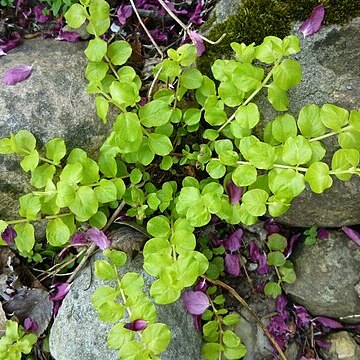Calyx with lateral lobes ovate-lanceolate, narrow, keeled, ciliate; posterior lobe 6–7 mm. long, 4–4.5 mm. wide, up to 9 mm. long, 6 mm. wide in fruit; anterior similar to but somewhat narrower than posterior; all lobes strongly reticulate-nerved.
Leaves 9–33.5(50) x 3–12(18) mm., lanceolate to ovate, obtuse or subacute, cuneate at base into short, broad petiole or subsessile, crenulate to crenate-serrate, glandular-punctate, markedly so beneath.
Decumbent or ascending, glandular-punctate herb up to 30 cm. tall, subglabrous; sterns simple or branched.
Creeping and ascending herb with soft spongy stems a few inches to 3 ft. long, rooting at the lower nodes
Capsule 4 x 2.5 mm., ellipsoid, foveolate, somewhat densely minutely glandular.
Flowers solitary-axillary, white to occasionally pale violet, bibracteate.
Pedicels 5–9 mm. long, winged just below calyx.
Bracts 1–1.5 mm. long, narrowly linear.
Flowers white
A herb.


